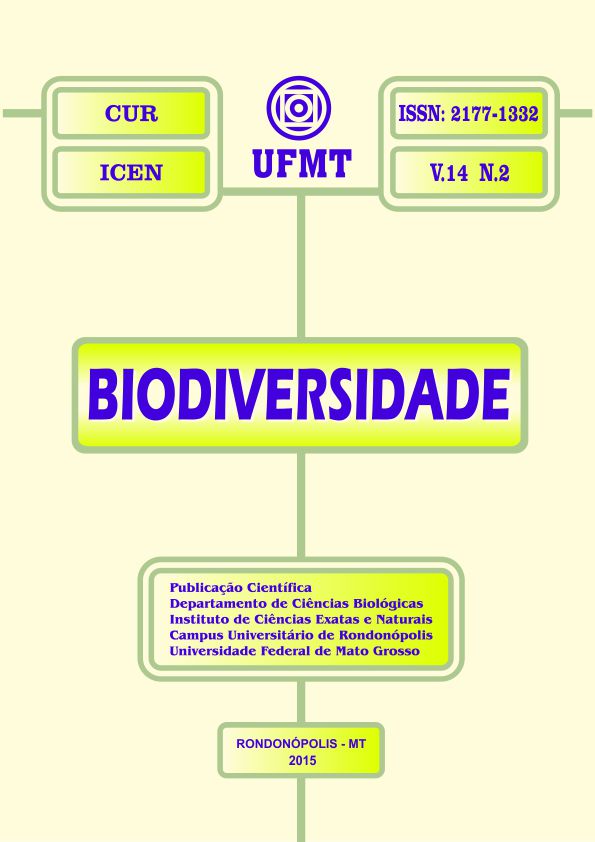ECOMORPHOLOGICAL PATTERNS OF SMALL SYMPATRIC FISH FROM A NEOTROPICAL RESERVOIR
Resumo
In this study, we sought to identify ecomorphological patterns of ten species of sympatric small fish (Astyanax altiparanae, Astyanax fasciatus, Bryconamericus stramineus, B. iheringi, Cheirodon stenodon, Characidium fasciatum, Geophagus brasiliensis, Hyphessobrycon anisitsi, Piabina argentea and Steindachnerina insculpta) in a stretch of the Veados River (23º16’80’’S/48º38’67’’W), under the influence of the Jurumirim reservoir (Paranapanema River, Brazil). Samples were collected monthly between August/96 and December/97 using seine nests. Biometric measurements were taken from fifteen individuals of each species following the criteria proposed by Lagler et al. (1977) for determination of the sixteen ecomorphological attributes used in ordination techniques (Principal Component Analysis - PCA). The first axis of the component explained 36.63% of the total variance and the second axis explained 25.96%. The ecological variables that influenced the disposition of the species in the morphological space were swimming ability, distribution in the water column and position of the mouth (where food is ingested). These variables separated nektonic species from benthic species. The attributes related to swimming ability and position of the species in the water column distinguished two groups of species. The nektonic species were continuous and active swimmers occupying the intermediate and upper region of the water column (A. altiparanae, A. fasciatus, B. stramineus, B. iheringi, C. stenodon, H. anisitsi, P. argentea and S. insculpta), and the nectobenthic species were identified as stationary (C. fasciatum and G. brasiliensis), obtaining food from the substrate. These analyses showed that species that share morphological similarities were also similar with regard to habitat occupation, which was to be expected. This reinforces the hypothesis that the period of feeding activity and food availability minimize the effects of competition by the species studied. The results demonstrate the importance of applying the Principal Component Analysis in ecomorphological studies, revealing its use as an excellent tool to estimate the ecological relationship between fish species and their distribution in the water column.




